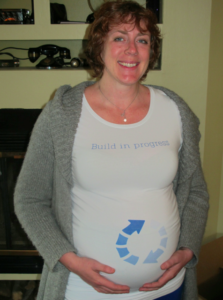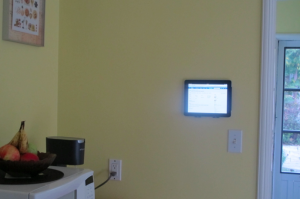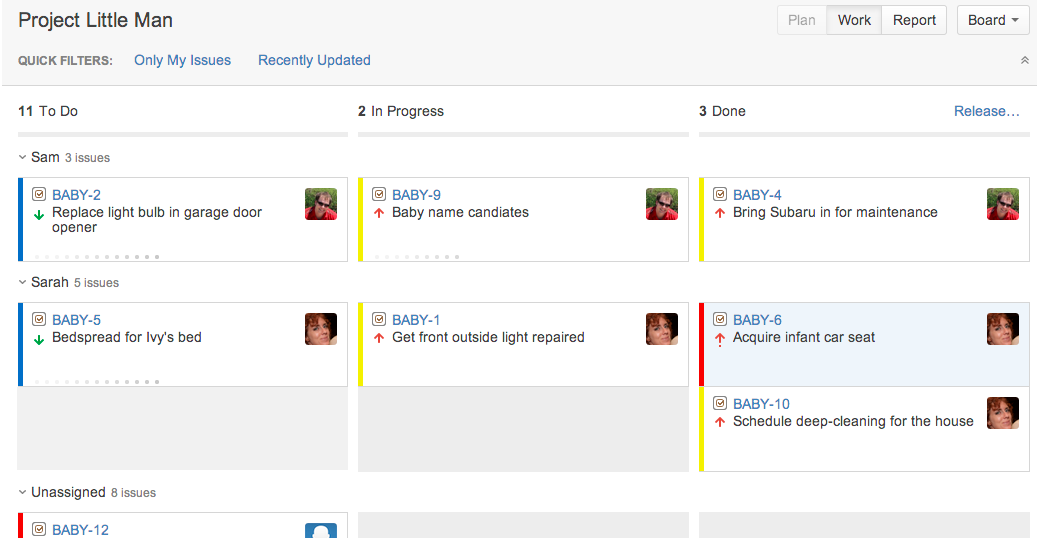 Those of you who saw me at Summit 2013 know I’ve got a special project underway: In about four weeks, our family will welcome another member.
Those of you who saw me at Summit 2013 know I’ve got a special project underway: In about four weeks, our family will welcome another member.
Even though this isn’t our first child, getting ready for “Little Man,” as we’ve been calling him, gets to feeling pretty overwhelming at times: Replace the car seat that evaporated into our community of friends after our first child outgrew it. Get the forms ready to send in for disability and parental leave. Bring home the bags of baby clothes passed down by co-workers. Get the car in for its overdue tune-up. Cook and freeze massive amounts of nutritious food to get us through those first few weeks. And be full-time working parents – y’know, in our free time. Oof.
Being a compulsive list maker, I had been jotting these things down in a notebook. But the darn notebook and I never seemed to be in the same place when I (frequently) needed to add an item, or (rather less frequently) got to mark one off as done. And to make matters worse, as the list grew, our gumption shrank. Should we start the car seat search this week, or rearrange the basement to make room for the incoming boxes of baby gear? Who’s gonna print out all those forms? Ugh. Clearly, we needed to get organized. Too bad we don’t have some kind of web-based task management tool at our disposal… oh wait!
Jira to the rescue
Naturally, I did what any Atlassian fan girl would do: I fired up a Jira OnDemand account.
Within a few minutes, I’d created user accounts for me and my husband, linked them to our email accounts, and was creating issues. After creating a half dozen or so using the default issue and field configurations, it was clear that our needs were quite a bit simpler than those of a software team. All we needed was a summary, description, assignee, priority, and the “task” issue type.
So, after trimming the extra issue types from our project, I set to work on the fields – the old familiar art of mixing and matching them with issue types and screens. I’ve set up some fairly sophisticated field configurations in my time, and appreciate the level of granularity Jira offers in this regard. But my goal this time was to keep it quick n’ dirty. My two-year-old was due to wake up from her nap at any moment, after all!
Then I remembered a shortcut: Instead of removing fields from individual screens or making them unavailable on certain issue types, I could just hide them. Voila! My tasks were freed from clutter in about six clicks.
Put it on the board
When I first learned about agile development back in my QA days, our scrum master gave me some sage advice: “Never underestimate the power of doing this,” he said as he moved moved a sticky from In progress to Done on our whiteboard. And it’s SO TRUE. Few things are more satisfying. So I knew instinctively that Project Little Man was going to need an agile board.
We agreed that a kanban style board would suffice, but when we set it up, something looked a bit “off” (my hubby is a developer and knows his way around a Jira Agile board, too). We had columns for To Do, In Progress, and Done, plus swimlanes by user. No lack of clarity on status or assignee. Then we realized that because all our issues are the “task” type, all the cards on the board were the same color. We were missing an important visual clue for mentally parsing one flavor of issue from the next.
Fortunately, there are several other pre-sets for assigning card color, including assignee and priority, or you can base the colors on custom queries. Priority was the obvious winner for us, though. Red for critical tasks, yellow for those of major importance, and blue for minor tasks. With our board set up just so, we set to work actually getting stuff done.
Staying on task
Our new level of organization supplied a nice energy boost for a while. Turns out dragging the task for replacing the busted infant swing into Done is just as gratifying as dragging a user story there. Man, did we ever feel “with it”!
But life moves on, novelty fades, and before long I noticed it had been almost a week since there’d been any movement on the board. No bueno. This baby will come whether we’re ready or not, so I held a mental mini-retrospective and identified two reasons we’d lost steam: the board wasn’t constantly in our line of sight the way a checklist on your fridge might be. Also, without daily checkins to keep these tasks at the top of our minds, we were simply forgetting they were there. Time to iterate a bit.
A daily stand-up seemed a bit cumbersome, so we decided to let Jira automate the nagging for us. I un-hid the Due date field, and plugged in target dates for the unresolved issues. Then I set up a simple filter to find all unresolved tasks coming due in the next three days, and set up a subscription for it. Jira runs this filter every morning, and emails us if there are issues that need attention.
As for keeping the board in our field of vision, we opted for the 21st century version of the fridge-mounted checklist: a wall mount for ye olde iPad in the kitchen, strategically located next to an electrical outlet. Now our board is kept open on a browser tab and easily accessible at all times. We can also use this rig to pull up recipes online as we shift the kitchen into high gear, making industrial-sized vats of chili and chicken pot pie filling to stock the freezer. (Bonus!)
With just a handful of weeks before the expected “release date,” I’m happy to say that Project Little Man is now moving along quite nicely. I’m also inspired to see how a Jira Agile board – and maybe a Team Calendar – might help us keep our household running smoothly amidst the whirlwind of neo-natal checkups, post-partum visits, and general sleep-deprived chaos.
But first things first. Like unearthing the newborn bath sling from the mountains of boxes in the basement, for example.
P.S. If you haven’t tried Jira Agile yet, I’d be remiss if I didn’t encourage you to remedy that situation without delay!


